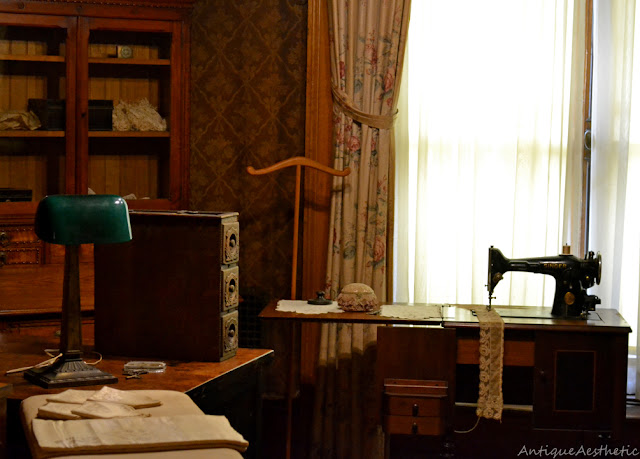Whenever I go in an antique store, no matter what I'm initially looking for, there is always one item I have to take time to study and admire - the sewing machine.
I've always had a soft spot for Singer sewing machines in particular. The first machine I ever used was my mother's 1970-80s Singer when I was very young, and even though it was fairly old, it always worked beautifully. I only ever tried one other brand, and it paled in comparison to that trusty old thing. When I needed to buy a new machine about two years ago, I couldn't help but buy a Singer, and it's been just as wonderful as my mother's.
Singer Corporation is an American sewing machine company, starting in 1851 by Isaac Merritt Singer. Isaac, interestingly, was a scandalous figure, having multiple wives and mistresses, to which he had 24 children. Because of the notion that sewing machines were to be sold to respectable homes, he was convinced to leave the country so that his infidelities wouldn't affect his booming company. He died in 1875, but left a legacy of Singer sewing machines that are still around today.
My love of Singers increased when I started to antique, and I was able to see so many varieties going all the way back to the 19th century. The vibrant paint, heavy ironwork, and decorative metal panels make these machines so beautiful to look at. And the best part is that they almost always work! I know this because I can't resist turning the needle wheel on every machine I see, and if that wheel works, there's a good chance it can be restored(however the skill needed to accomplish this, I don't yet have).
Antique sewing machines are not only found in antique stores, mind you. Sometimes I'm fortunate enough to see them in museums and historic houses, so on those occasions I make a hobby of photographing them, even if they aren't Singers. Here's what I've seen so far:
Grand Traverse Lighthouse, Traverse City, MI.
Hackley & Hume House, Muskegon, MI.
The Elms, Newport, RI.
Roseland Cottage, Woodstock, CT.
Scolnik House, Muskegon, MI.
Even though I'm sure I've seen many that were of a good price and could be used, I've never indulged in buying one. They're certainly too cumbersome to have multiples of, but with any antique, it's very hard to own just one. In the mean time, I'll admire them from afar, handle them when I can, and always be on the lookout for the one machine that will change my mind.
All Singer images are from my copy of Singer Sewing Library - No. 2: How To Make Dresses, The Modern Singer Way.





















